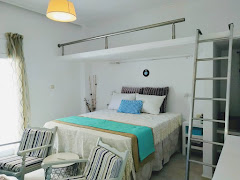Fournes is the second-to-last village that you will meet on your way to the famous Samaria Gorge, the longest ravine in Europe (the last village is Lakki). It sits below the Lefka Ori mountain range. Its location, on a flat fertile plain just before the long and winding road leading to the mountains, is its greatest asset. The message one receives on passing it on their way to the Omalos valley where the gorge is located is that it has seen better days. The neo-classical designs in the old houses on the main road attest to a certain grandeur that has now become all but lost. The fields of Fournes are covered in olive and orange trees, but they often have a neglected look to them, some of which have been turned into construction sites. The atmosphere hints at a sign of modern times: the demise of agriculture.
Fournes was once considered very wealthy because its location was easily accessible, and agricultural produce was an important source of wealth. Back in the days of wealth and prosperity, people showed off their money by decorating their homes ornately, indulging in the latest fashion and dining out on a regular basis in the town. It is said that a man would get a new suit sewn every month, even if he didn't get a chance to wear the suit he had bought in the previous month. Those days are over. Olives are found strewn uncollected under the trees, oranges remain on the tree even when it is producing new crops, wild thorny blackberry vines strangle olive and orange trees. The decay is obvious: rural decline in favour of urban progress.
Despite its drawbacks, Fournes still manages to lure locals and foreigners alike. The number of residents has grown slightly over the years since foreigners and wealthier citizens started building new houses in the area. This is all due to its proximity to the main town, and the stunning views in amongst the peace and quiet of a village location. It also offers plentiful opportunities in agricultural occupations. In the appropriate season, there is olive picking and orange packing, and if one is not averse to the sweaty toil of fieldwork, there are plenty of seasonal jobs available in the way of cleaning up fields by getting rid of thorny bushes and weeds under the trees, and generally maintaining the land, enticing in this way the many economic migrants who have taken up residence in the old derelict houses.
In August, the colour orange is strongly represented in
©All Rights Reserved/Organically cooked. No part of this blog may be reproduced and/or copied by any means without prior consent from Maria Verivaki.

The decay is sad, but I think it helps make the pictures interesting. The one of all the oranges on the ground is pretty to me.
ReplyDeleteI am happy that you were inspired to start your spectral color studies from Crete! Color is an amazing lens to view the world through. Be careful, once you start looking at your world this way, it can be quite addictive! Thanks for the first post, I look forward to your future studies.
ReplyDeleteI can almost breath the air in Fournes because of your story! Thank you!
ReplyDeleteWhat a lovely tribute to an area in transition. I like to look at the pictures and try to imagine what it looked like when it was at it peak. All those oranges on the ground really speaks to the changes in what was once a great orchard. Those thorny bushes are downright intimidating! Once again, I've learned something new from your posts!
ReplyDeleteOnce again, a very interesting post. I see the rural decay all around us here. There are more and more homes being constructed eating up all of the agricultural areas...it's a shame.
ReplyDeleteYour pictures are wonderful!